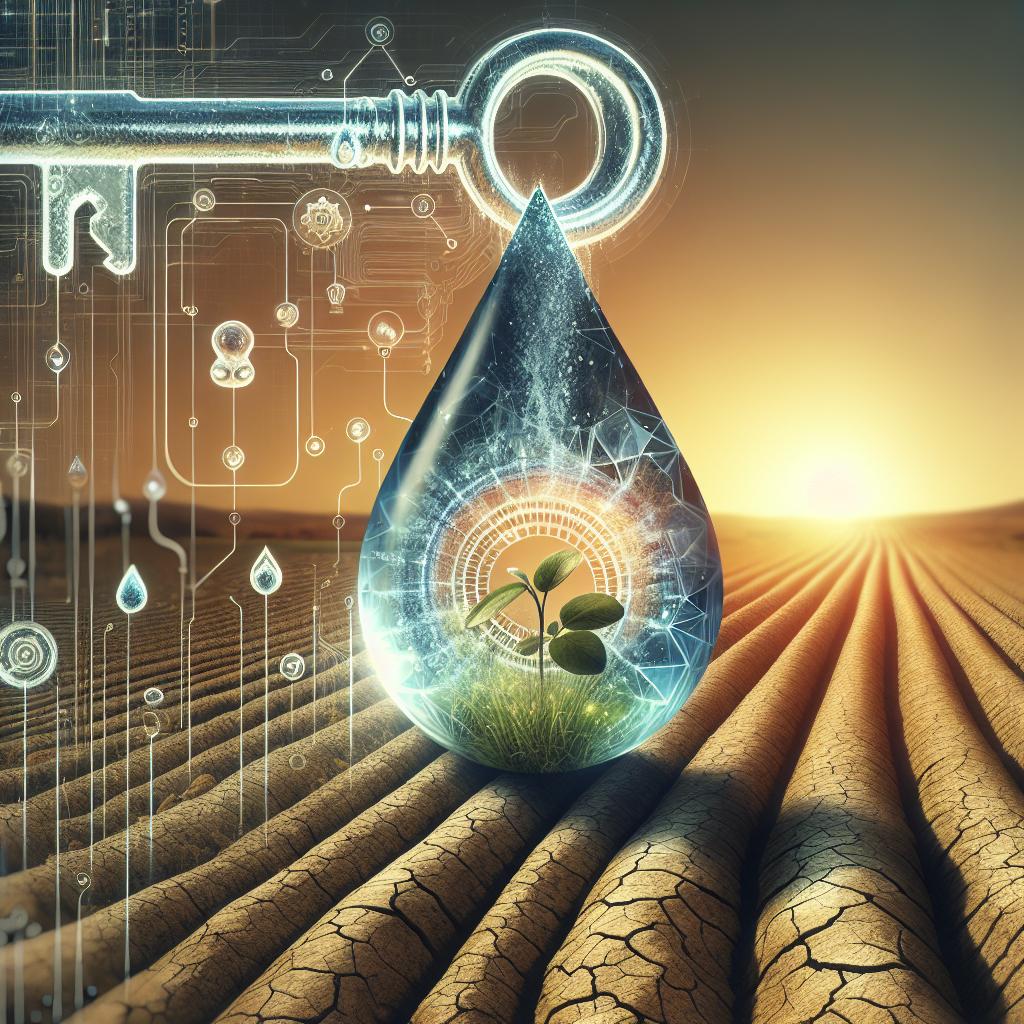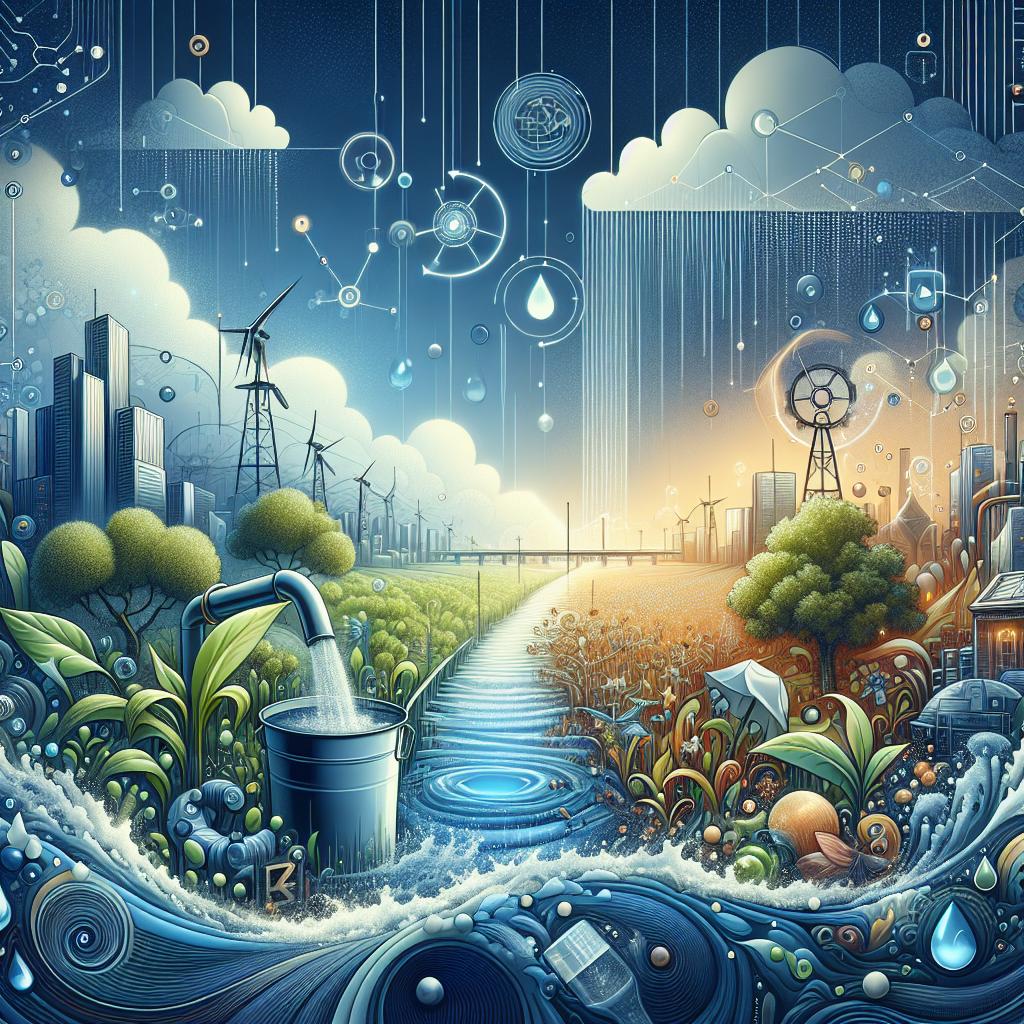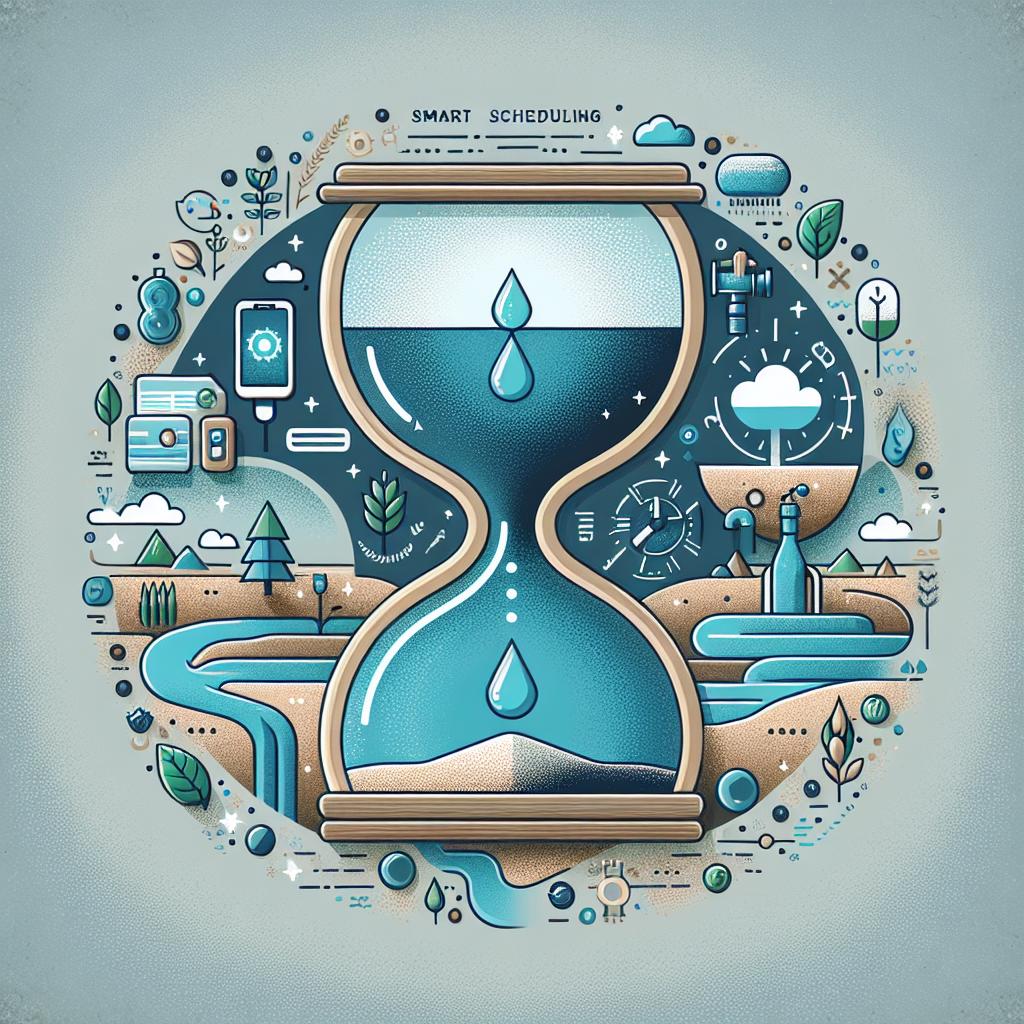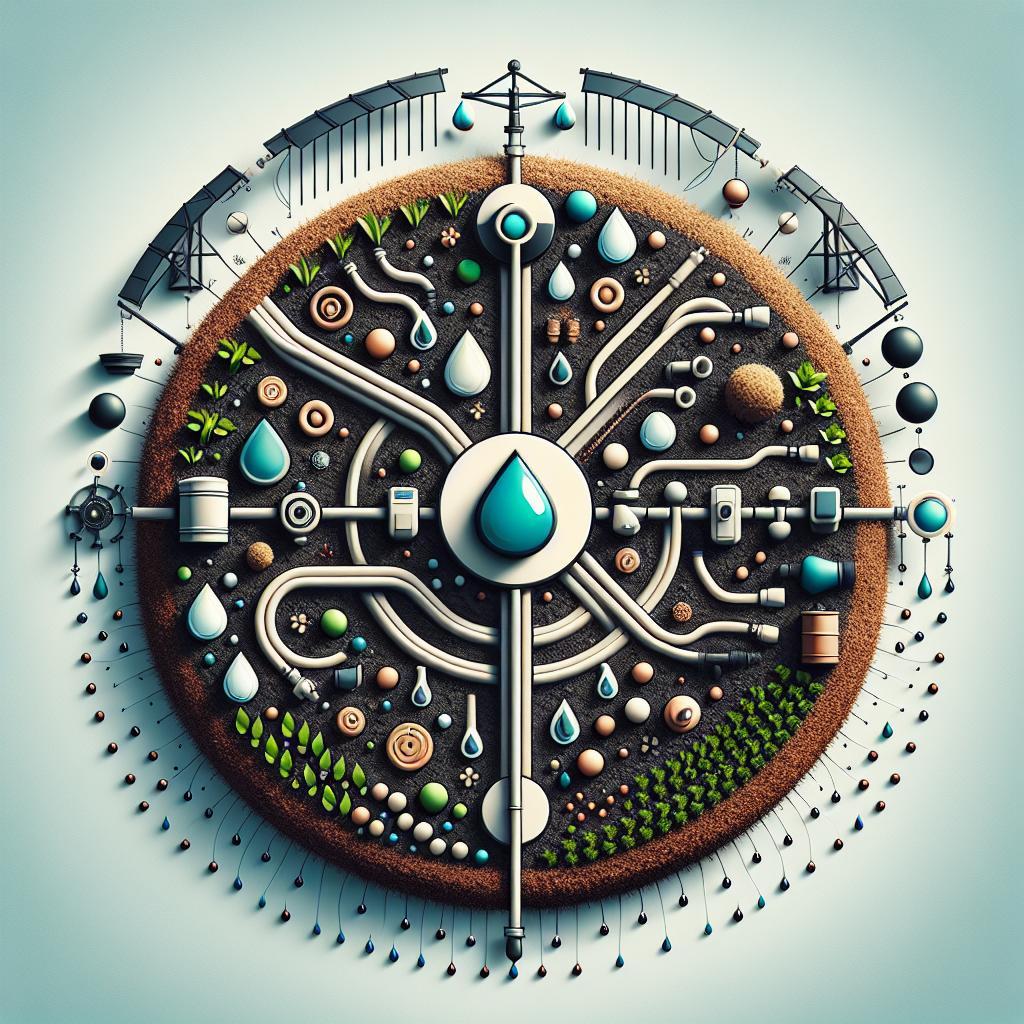This post may contain affiliate links which means I may receive a commission for purchases made through links. Learn more on my Private Policy page.
Introduction: Quenching the Thirst of Our Earth
Water is the lifeblood of our planet, nurturing the roots of our gardens, farms, and landscapes. But with the increasing challenges of climate change and dwindling freshwater resources, it’s more crucial then ever to adopt sustainable practices that ensure our precious water is used wisely.Fortunately, the world of irrigation has seen a surge of innovative water-saving techniques that not only preserve this vital resource but also foster healthier plants and thriving ecosystems.
In this article, we’ll dive into the most popular water-saving techniques for irrigation systems, transforming the way we think about watering our flora. From smart scheduling to cutting-edge technology, our friendly exploration will unveil practical methods that can enhance your garden, save money, and contribute to a greener planet. So,grab your gardening gloves and let’s embark on this journey towards a more sustainable and water-efficient future!
Unlocking the Secret of Drip Irrigation for Drought Resistance
Drip irrigation is a revolutionary technique that has transformed the way we approach water scarcity, particularly during droughts. By delivering water directly to the roots of plants, this method minimizes evaporation and runoff, ensuring that every drop counts. Farmers and gardeners alike can implement this efficient system, which consists of a network of tubing and emitters that supply water at a slow, steady pace. This targeted delivery not only conserves water but also encourages deeper root growth, enhancing drought resistance in plants. Consider using various components to optimize your drip irrigation system:
- Emitters: Adjustable emitters allow for customized water flow rates.
- Tubing: high-quality, UV-resistant tubing ensures longevity and minimizes leaks.
- Filters: Essential for preventing clogging and maintaining system efficiency.
- Pressure Regulators: Ensure consistent water delivery without damaging plants.
one of the undeniable advantages of drip irrigation is its adaptability to various crop types and climate conditions. For those looking to delve deeper into this water-saving technique, a simple table can outline the benefits versus conventional irrigation methods:
| Feature | Drip Irrigation | Traditional Irrigation |
|---|---|---|
| Water usage | Up to 60% less | High |
| Fertilizer Efficiency | High (fertigation possible) | Low |
| Weed Growth | Reduced | Increased |
| Labor Cost | Lower over time | Higher |
By unlocking the potential of drip irrigation, gardeners can cultivate healthier plants while conservatively managing water resources—a win-win for both productivity and sustainability in times of drought.

Harnessing Rainwater: Your Guide to Effective Water Harvesting
Rainwater harvesting is an invaluable technique for sustainable irrigation systems,allowing gardeners to make the most out of nature’s resources. By collecting rainwater, you not only reduce dependency on municipal water supplies but also promote eco-friendly gardening practices. Consider installing a rain barrel or a more elaborate catchment system that channels rainwater from your roof into storage tanks. This simple solution ensures that you have a reservoir of free, nutrient-rich water ready for your plants during dry spells. Here are some effective setups you can consider:
- Gutter systems: Route rainfall from your roof directly into barrels.
- Soil Moisture Sensors: Automate your irrigation by monitoring soil moisture levels.
- Drip Irrigation: Reduce water waste by delivering water directly to plant roots.
Utilizing rainwater effectively not only transforms how you irrigate but also enriches your garden’s ecosystem. To maximize the benefits, consider employing filtration and purification methods to maintain water quality, allowing you to nourish your plants without harmful chemicals. you can further enhance your water management by integrating a simple rain garden—a planted depression that collects rainwater, allowing it to permeate the soil. This method not only captures excess rainwater but also encourages biodiversity by providing a habitat for various organisms. To give you an idea of how to implement rainwater harvesting effectively,here’s a quick comparison of a few common practices:
| Method | Benefits | Considerations |
|---|---|---|
| Rain Barrels | Simple to install; cost-effective | Requires regular maintenance for cleanliness |
| In-Ground Tanks | Suitable for larger properties; less visible | Higher initial investment; requires excavation |
| Surface Catchment | Natural collection; promotes groundwater recharge | Can require size adjustments based on rainfall |

Smart Scheduling: Timing is Everything in Water Conservation
Water conservation in irrigation isn’t just about using less water; it’s about using it smartly. To maximize efficiency, consider employing a schedule that aligns with local climate conditions and plant needs. By watering early in the morning or late in the evening, you reduce evaporation loss while also ensuring that your plants receive the moisture they need without interference from harsh sun exposure. Here are some effective tips for smart scheduling:
- Monitor Weather Patterns: Keep an eye on the forecast to adjust your watering schedule based on expected rainfall.
- Soil Moisture Checks: Use moisture sensors to determine the actual needs of your soil, ensuring you water only when necessary.
- Seasonal Adjustments: Adapt your irrigation frequency and duration during different seasons to cater to varying plant needs.
Another way to refine your scheduling is through the use of advanced irrigation systems that offer automated timers and rain sensors.Utilizing these technologies can definitely help streamline your watering process, allowing you to create a customized irrigation plan that caters specifically to your garden. Consider a structured table to compare various techniques:
| Technique | Benefits |
|---|---|
| Drip Irrigation | Reduces water wastage by delivering water directly to plant roots |
| Soaker Hoses | Evenly distributes moisture while minimizing evaporation |
| Rain Sensors | Automatically suspend watering during rainfall to conserve water |

Embracing Technology: Innovative Tools for the Modern Gardener
In today’s gardening world, technology offers a plethora of solutions to enhance irrigation efficiency and considerably reduce water usage. From smart systems that automate watering schedules based on weather forecasts to intuitive sensors that evaluate soil moisture levels, modern tools are designed to help gardeners optimize resources. Here are some innovative options to consider:
- Drip Irrigation: This method delivers water directly to the roots of plants,minimizing evaporation and runoff.
- Rain Barrels: Harvesting rainwater for irrigation not only conserves water but also reduces your water bill.
- Soil Moisture Sensors: By monitoring the moisture levels in the soil, gardeners can water only when necessary, ensuring plants get the right amount of hydration.
- Automated Timers: These devices allow you to schedule watering times, preventing overwatering and saving precious resources.
Moreover, integrating technology into your gardening routine opens doors to new strategies, such as creating a DIY irrigation system tailored to your garden’s unique needs. By combining different technologies, you can design a cohesive irrigation plan that adjusts to changing weather conditions. Consider exploring these additional approaches to further enhance your watering techniques:
| Technique | Description |
|---|---|
| Zone Watering | Dividing your garden into zones helps target water delivery more effectively. |
| Mulching | A layer of mulch retains moisture in the soil,reducing the need for frequent watering. |
| Subsurface Irrigation | This technique places hoses underground to directly water plant roots, reducing evaporation. |
Final Thoughts
As we wrap up our journey through the most popular water-saving techniques for irrigation systems,we hope you feel inspired and empowered to make thoughtful choices in your gardening and agricultural practices. Remember, every drop counts! By implementing these innovative strategies—from drip irrigation to smart sensors—you can not only conserve precious water but also cultivate healthier plants and boost your yield.
Embrace the joy of gardening with a conscience, knowing that you’re contributing to a more sustainable future. Whether you’re a seasoned gardener or a curious beginner, there’s always room to learn and grow. So, take that first step today—experiment with these techniques, share your experiences with fellow garden enthusiasts, and watch your plants—and your savings—thrive!
Thank you for joining us on this exploration of mindful irrigation. Together, let’s nurture our plants and our planet, one inspired decision at a time. Happy watering! 🌱💧
This post may contain affiliate links which means I may receive a commission for purchases made through links. Learn more on my Private Policy page.

